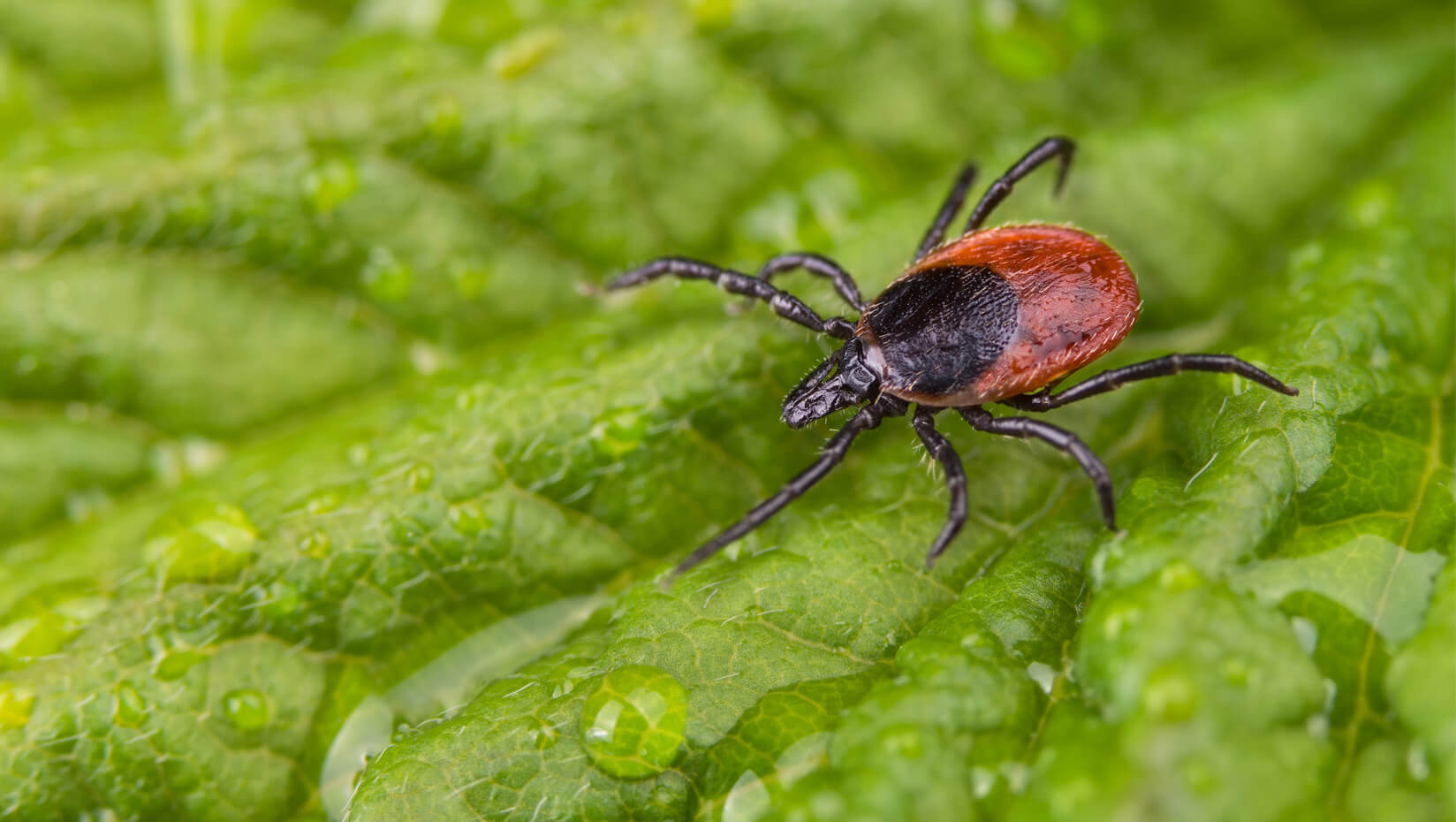
To control disease-transmitting blacklegged ticks, Gardner will isolate ecosystem factors that inhibit them
Disease-transmitting blacklegged ticks invading new areas are a threat to the health of people and animals and are a burden on the economy.
Allison Gardner will seek to isolate ecosystem factors — including temperature and snow pack — that inhibit their geographic spread and that lead to methods to control them during vulnerable life stages and times of year.
The National Science Foundation awarded the assistant professor in the School of Biology and Ecology $200,000 for a three-year project that begins Sept. 1.
The hard-bodied blacklegged ticks (Ixodes scapularis) transmit pathogens that cause numerous diseases in humans, including Lyme, anaplasmosis, babesiosis, and Powassan virus.
In 2019, the Maine Center for Disease Control and Prevention reported a record-high 2,079 cases of Lyme disease in the state; about 300,000 are reported annually in the U.S. Untreated, symptoms can include severe headaches, neck stiffness, facial palsy, arthritis with severe joint pain and swelling, irregular heart beat, dizziness, shortness of breath, inflammation of the brain and spinal cord, and shooting pains, numbness, or tingling in hands or feet.
In 2018, there were 476 confirmed or probable cases of anaplasmosis in Maine; 101 were hospitalized, according to the Maine CDC. The University of Maine Cooperative Extension Tick Lab reports that the number of cases nearly doubled annually from 2012 to 2017. In addition to some similar symptoms of Lyme disease, others include respiratory failure, bleeding problems and organ failure. Fewer than 1% die, according to the Centers for Disease Control and Prevention.
Cases of Powassan virus were first reported 20 years ago in Maine; each year the number of confirmed cases has been in the single digits. Symptoms include fever, vomiting, confusion, loss of coordination, seizures, and slurred speech. The CDC reports about one of every 10 cases ends in death and half of all survivors have permanent brain damage.
Gardner says blacklegged ticks’ current distribution appears to be mostly limited by abiotic ecosystem factors such as temperature and humidity during the 95% of their two-year life cycle that they’re not attached to a host.
Blacklegged ticks’ life cycle has four stages: egg, six-legged larva, eight-legged nymph, and adult. After eggs hatch, ticks need a blood meal from a host at every stage to survive, molt and reproduce.
Gardner will examine to what extent winter conditions of temperature and snowfall constrain the geographic distribution of the blacklegged tick at five field sites spanning statewide latitudinal and coastal-inland gradients.
Maine is an ideal natural laboratory, says Gardner, because of its strong natural temperature and precipitation gradients within a narrow geographic range.
Given projected warmer and wetter winters in Maine, Gardner also wants to understand potential changes in ticks’ future distribution.
She and her research team will utilize manipulative field experiments and observational field studies to better understand: interacting effects of temperature and snow cover on overwinter survival; impacts of climate on host-seeking behavior and phenology; and co-invasion dynamics of the blacklegged tick and three of the pathogens it transmits.
Collective findings could transform the study and modeling of blacklegged tick populations under current and future climate scenarios.
Gardner’s experimental approach will be able to be generalized to study numerous other tick species that are expanding their geographic ranges in the northeastern U.S. and other regions, such as the lone star tick and the Asian longhorned tick.
Some students taking part in the research will be part of new NSF Research Experiences for Undergraduates (REU) and NSF Research Traineeship (NRT) programs in the Initiative for One Health & the Environment that include populations underrepresented in STEM. Some students in the Upward Bound program at UMaine also will take part.
Researchers will support the development of a new No Ticks for ME public outreach event to train participants in tick identification, as well as to provide an overview of key research findings, and information about how to promote safe and effective personal tick protection practices in their communities.
People are invited to send ticks to the University of Maine Cooperative Extension Tick Lab — which Gardner is not affiliated with — for identification or disease testing.
Contact: Beth Staples, beth.staples@maine.edu
